Understanding Equivalent Fractions
Table of Contents
Introduction
Equivalent Fractions
Equivalent fractions play a significant role in the realm of mathematics, particularly when dealing with fractions and their relationships. Let’s delve into the concept of equivalent fractions and explore their importance in various mathematical operations.
Analogy of Definition
What are Equivalent Fractions?
Equivalent fractions are fractions that represent the same part of a whole, even though they may look different. When simplified to their lowest terms, equivalent fractions have the same value.
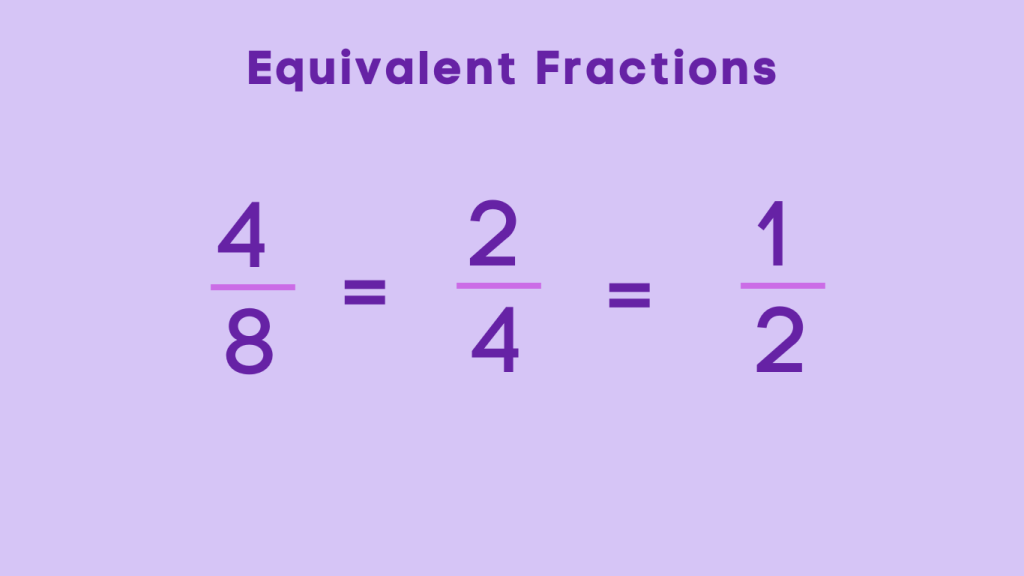
Method
How To Find Equivalent Fractions?
To determine if two fractions are equivalent, simplify both fractions to their lowest terms. If the simplified fractions are the same, then the original fractions are equivalent. We can also find equivalent fractions by multiplying or dividing both the numerator (top number) and the denominator (bottom number) by the same number.
Multiplying by the Same Number
When we multiply both the numerator and the denominator of a fraction by the same number, the value of the fraction doesn’t change. Let’s look at an example!
Example:
Step 1: Starting with the fraction \frac{2}{3}
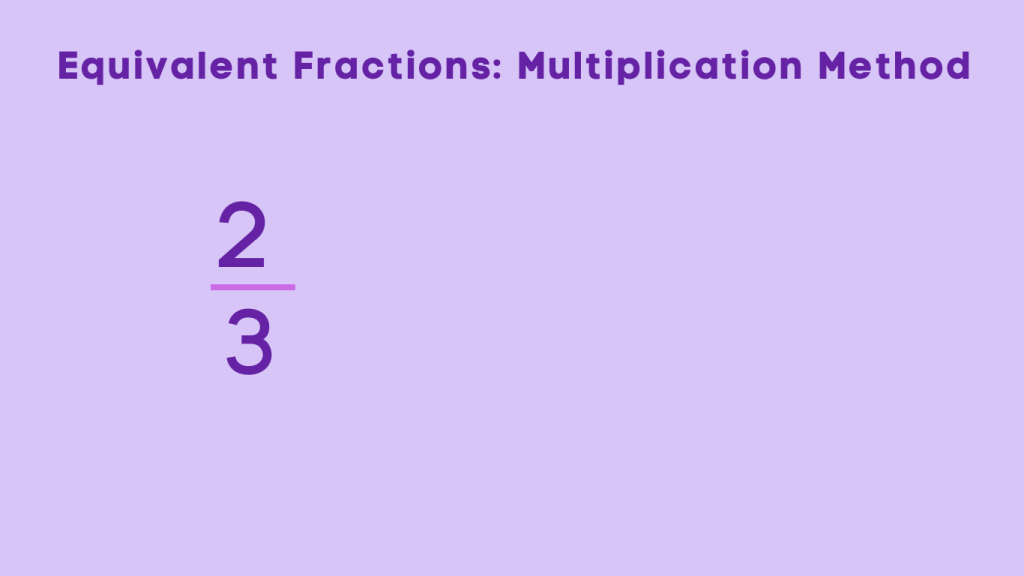
Step 2: Multiplying both the numerator and denominator by the same number, i.e. 4.
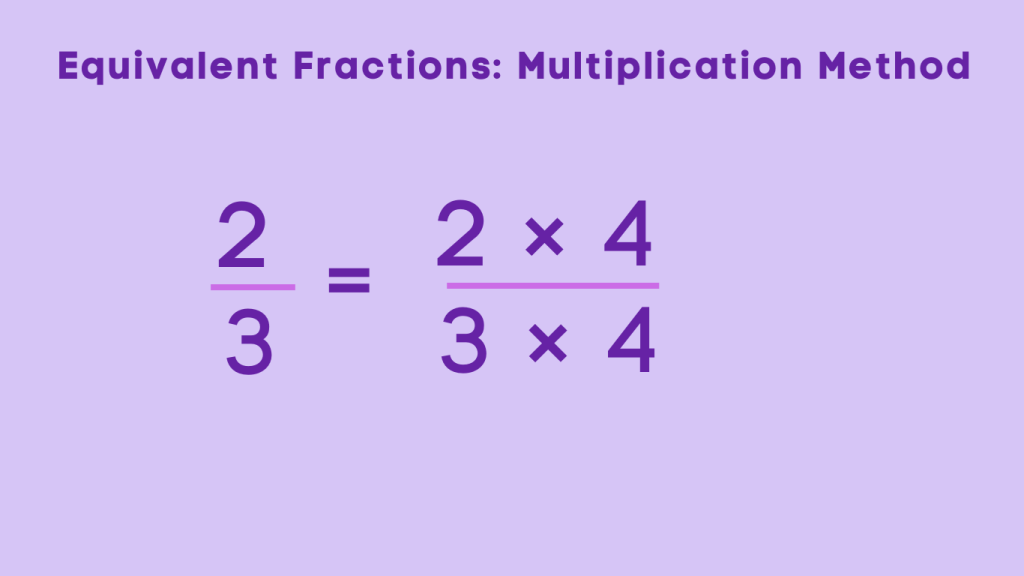
Step 3: We get \frac{8}{12}, which although looks different, is the same as \frac{2}{3}
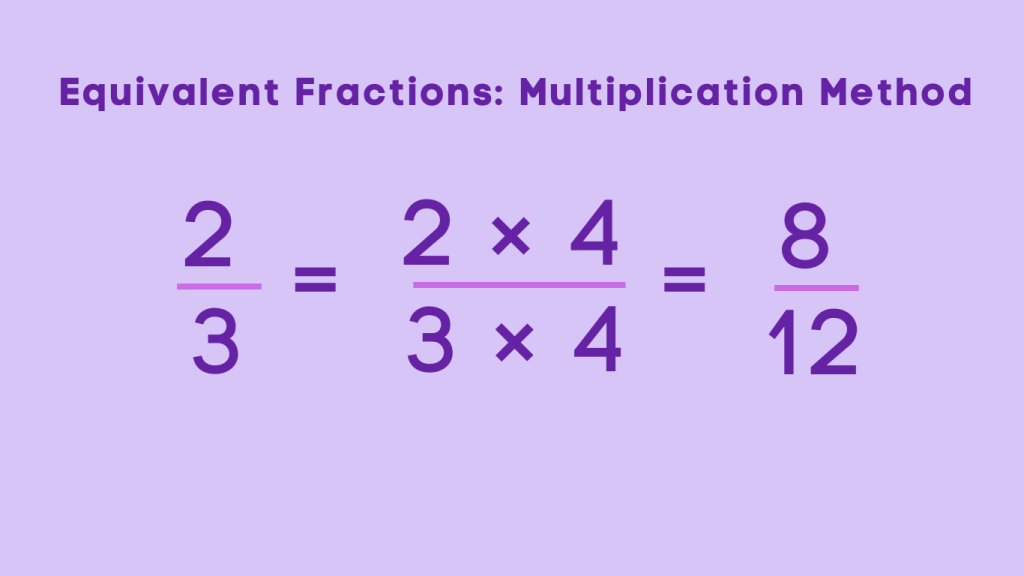
Dividing by the Same Number
When you divide both the numerator and the denominator of a fraction by the same number, you simplify the fraction. This process can help you find an equivalent, simpler fraction.
Example:
Step 1: Let’s start with the fraction \frac{6}{12}
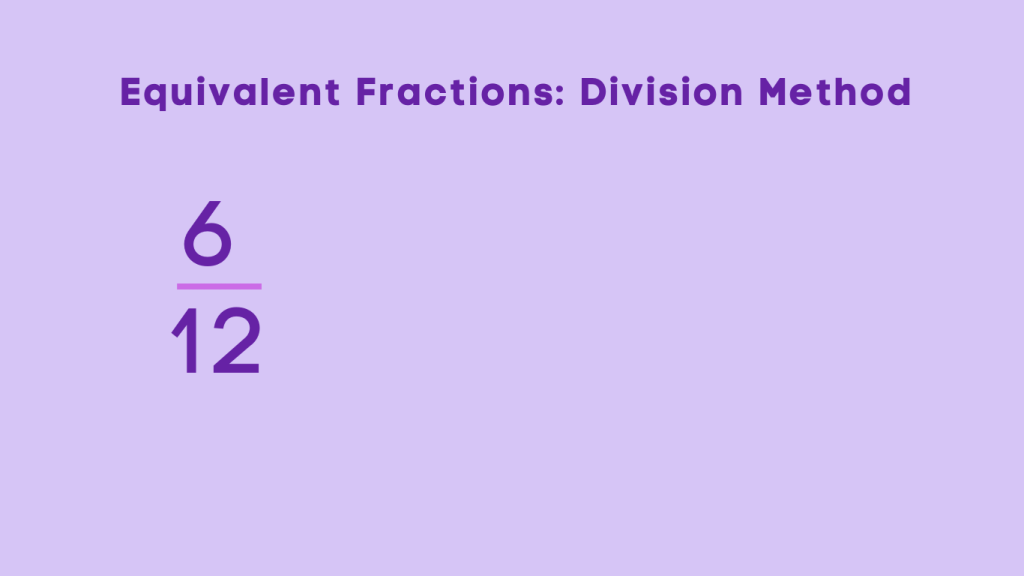
Step 2: Dividing both the numerator and denominator by the same number, i.e. 3.
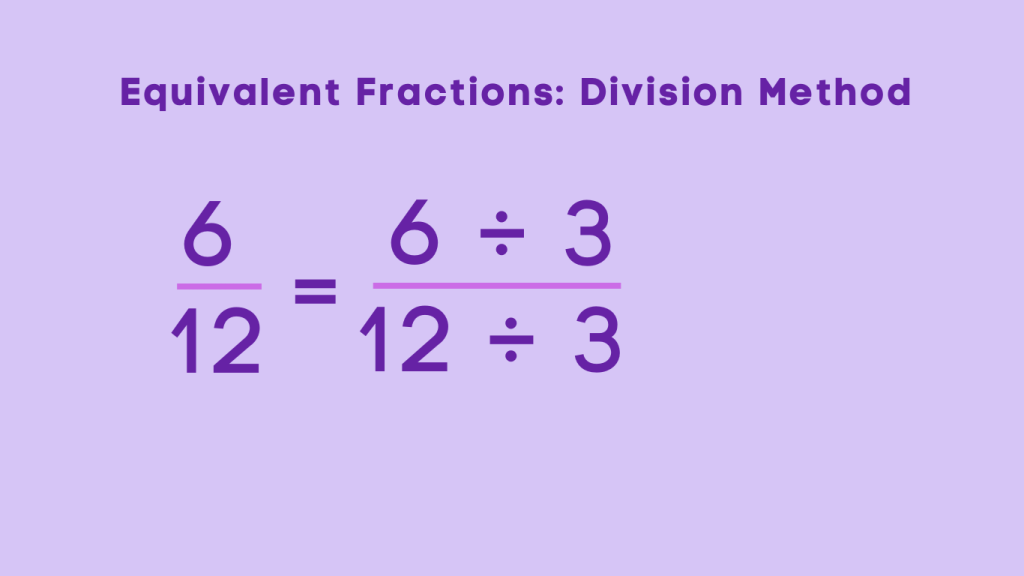
Step 3: We get \frac{2}{4}, which although looks different, is the same as \frac{6}{12}
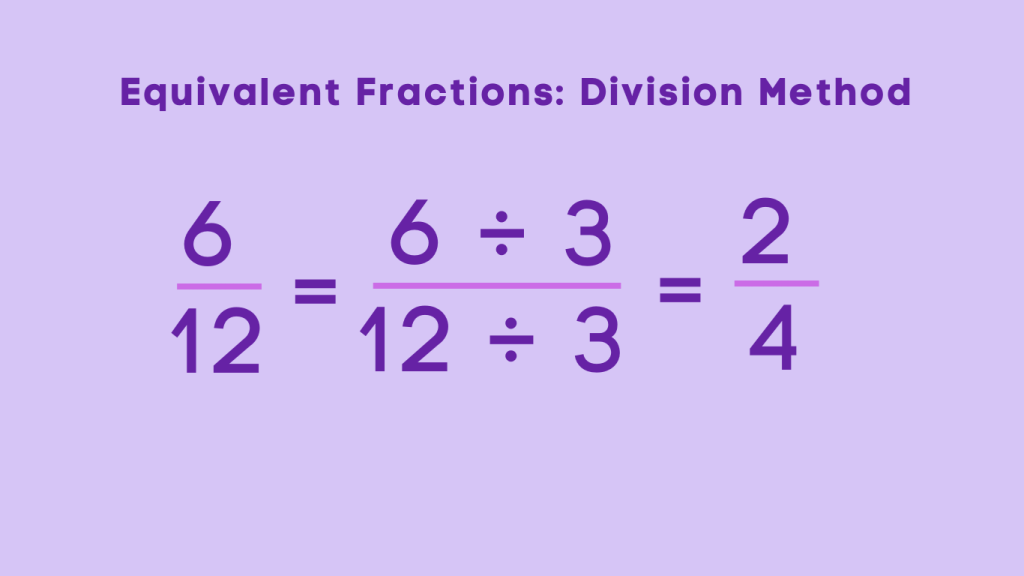
Examples
Example 1:
Step 1: Starting with the fraction \frac{3}{5}
Step 2: Multiplying both the numerator and denominator by the same number, i.e., 3.
Step 3: We get \frac{9}{15}, which although looks different, is the same as \frac{3}{5}
Example 2:
Step 1: Starting with the fraction \frac{10}{15}
Step 2: Dividing both the numerator and denominator by the same number, i.e., 5.
Step 3: We get \frac{2}{3}, which although looks different, is the same as \frac{10}{15}
Quiz
Tips and Tricks
1. Multiply or Divide by the Same Number
Tip: To find an equivalent fraction, multiply or divide both the numerator (top number) and the denominator (bottom number) by the same number.
2. Cross-Multiplication Check
Tip: To check if two fractions are equivalent, cross-multiply and compare the results. To check if \frac{2}{3} and \frac{4}{6} are equivalent fractions we can multiply 2 × 6 = 12 and 3 × 4 = 12. Since the products are equal, the fractions are equivalent.
3. Use the Same Multiples
Tip: When looking for equivalent fractions, multiply or divide by common multiples to keep the fractions equivalent.
4. Remember Key Equivalents
Tip: Memorize some common equivalent fractions for quick reference. For example: \frac{1}{2} = \frac{2}{4} = \frac{3}{6} = \frac{4}{8}
Real life application
Story: The Baking Adventure of Lily and Max
Lily and Max, two aspiring bakers, embarked on a baking adventure that required the application of equivalent fractions to create delectable treats and master the art of baking.
Challenge 1: The Recipe Conversion
Lily and Max were tasked with converting a recipe that called for 1/2 cup of flour into a larger batch. By using equivalent fractions, they scaled the recipe to require 2/4 cups of flour, ensuring the perfect texture for their baked goods.
Challenge 2: The Measuring Dilemma
In another baking endeavor, Lily and Max needed to measure 3/4 cup of sugar but only had a 1/3 cup measuring cup. By utilizing equivalent fractions, they determined that 3/4 cup of sugar was equivalent to 9/12 cups, allowing them to accurately measure the required amount.
Challenge 3: The Portion Predicament
When dividing a batch of cookies into equal portions, Lily and Max used equivalent fractions to ensure that each portion received an equal share, maintaining consistency and fairness in their baking creations.
FAQ's
Like? Share it with your friends






